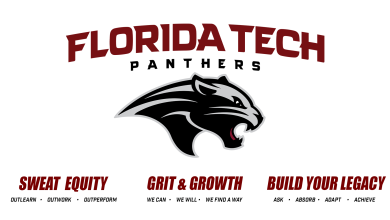Human-Centered Design Will Change Our World
Three Projects from Florida Tech’s School of Human-Centered Design, Innovation & Arts
The modern evolution of things, in nine sentences:
1) The first half of the 20th century, everything was mechanical.
2) Back then, a car engine was almost entirely mechanical, for example: rotors, pistons, tubes, mechanical parts and a few wires.
3) As that century came to an end, the mechanical was now joined, later in the process, by the electronic and early computers.
4) In other words, there was a shift from hardware to software.
5) Car engines now included, and required, computers.
6) Since the beginning of the 21st century, we have shifted dramatically again: software is now the starting point.
7) Computer-aided design, modeling and simulation are commonly used.
8) Cars, nevermind their engines, are now designed and “driven” without even leaving the computer screen.
9) The era of “virtual engineering” has arrived.
“This,” said Guy André Boy, dean of Florida Institute of Technology’s School of Human-Centered Design, Innovation & Arts, “is extremely powerful, because we can test human-systems integration at design time.”
“In other words,” Boy continued, “we are doing human-centered design.”
Within the offices and labs at Boy’s school, in rooms filled with screens and simulators, 3-D printers and white boards, he and others are harnessing that revolution in ways that will someday change very fundamental things about our world.
Air travel. Space flight. Energy systems. Classrooms. Crisis management.
Here is a look at three projects under development.
Onboard Weather Situation Awareness System
The volume of air traffic has increased steadily for three decades, averaging 5 percent growth per year over that time—and double digits in some places, such as Asia. That leads to overcapacity at airports.
Add to the increasingly crowded skies the ultimate X-factor—weather—which is behind nearly two-thirds of delays, and it is no wonder that air travel leaves travelers frustrated and exhausted.
Enter the Onboard Weather Situation Awareness System, or OWSAS. In concert with two massive programs that use satellite data (instead of radar) for air traffic control—the Next Generation Air Transportation System in the U.S., known as NextGen, and the European Single European Sky Air Traffic Management Research, or SESAR—the tablet-based OWSAS will bring unprecedented weather awareness into the cockpit.
(Boy was a member of the Aircraft Working Group of the Joint Planning and Development Office, or JPDO, anticipating NextGen commercial aircraft flight deck requirements, and he remains a member of the Scientific Committee of SESAR.)
HOW IT WILL WORK: Used by the first officer or co-pilot who is not flying the plane, OWSAS will offer interactive 3-D graphics showing weather and, in a layer of data that takes the program beyond a simple weather app, will also show the trajectory of their airplane and of other airplanes. Pilots could see route conflicts and weather concerns before the ground-based controllers see them and then use OWSAS to chart a better course.
The success of OWSAS, Boy said, is tied to increased use of authority sharing, a practice that would have air traffic control become more about air traffic management, with some duties now held by ground-based controllers shifted to pilots and first officers on planes. In fact, the entire airspace organization is being re-thought.
WHY IT IS IMPORTANT: Efficiency, in flight operations, scheduling and fuel use. Safety, as OWSAS allows for better route and weather management, fewer planes circling above airports, waiting to land. Passenger comfort: the 3-D weather information, which comes sooner than data generated from the plane’s nose-mounted radar, would allow pilots to better avoid storms and turbulence and arrive at their destinations faster.
Adaptive Spaceship Cockpit Simulator
Design the right thing.
That’s a key facet of the philosophy of human-centered design, and it is achieved in part by the use of simulators.
Ondrej Doule, an assistant professor at the School of Human-Centered Design, Innovation & Arts, is developing a new type of simulator that could help astronauts make the most of their time in space and improve efficiency and safety during human spaceflight missions. Called the Adaptive Spaceship Cockpit Simulator, the device would allow a spacesuit-clad person to explore human-system integration in a variety of spaceship cockpits—that’s the “adaptive” in the name—during the simulated motion of human spaceflight.
HOW IT WORKS: The participant would be strapped into a seat attached, gyroscope-like, to the center of a large ring. He would be moved to different positions and rotations, where he would then interact with a model spaceship cockpit or other elements of the vehicle.
WHY IT IS IMPORTANT: As we look toward long-duration space flight, it is essential that scientists and others understand how astronauts on these missions perceive and input information. After all, on months-long flights to Mars, for example, the astronaut will be required to handle unforeseen and risky situations without ground control.
This is a good example of what human-centered design teaches: moving from 20th century automation (which led to classical, corrective human factors and ergonomics) to 21st century autonomy (which is leading to modern human-systems integration).
“This is about figuring out the best way to communicate with the spaceship in any possible scenario,” Doule said.
Which input and display system is most efficient in the complex environment of human spaceflight that is affecting the body and perception even as gravity changes? A joystick? A mouse? A track ball? Which communication system is fastest and safest? Wearing gloves and a helmet, dealing with the motion in a cockpit—what will work best as the astronaut interacts with the spaceship systems?
Understanding that could shape our success with future space exploration, commercial mission and even suborbital space travel.
SCORE
Named with a nod toward the collaboration exemplified by an orchestra, this tool is something that brings human-centered design to the design process itself. It is being developed as part of a project centered on developing a nuclear reactor, something called the Integral Inherently Safe Light Water Reactor.
Involving 36 people, including nuclear, electrical and mechanical engineers, safety experts, human factors folks, the overall project highlights the challenges of ensuring project members tasked with very different duties still understand the overall project and how their particular work fits in.
HOW IT WORKS: SCORE is meant to help manage complex projects. A computer-based system, this tool will document the processes and solutions associated with each step of a project and allow for communication with exactly the right person. Information will be shared via intranet with participants.
Visually and structurally, SCORE has four areas: One is the design itself; in this case, a 3-D rendering of the reactor under construction that users can explore and manipulate using touch screens and other input methods. The second is called “rationalization,” and it highlights the reason behind decisions—“why we did that.” This will facilitate the work of designers. The third space is an inventory of all the parts involved in the project; and the fourth highlights functionalities: users can see simulations of the system actually working.
WHY IT IS IMPORTANT: SCORE brings together two concepts that have long been separated: a holistic focus that shows how everything works together, and a more granular focus that presents detailed information.
As contrary as those two areas are, this dual focus is essential, Boy said, and crucial to support human-systems integration. “Project participants need to see connections among things,” he said.
Whether nuclear reactors, jet planes or other complex projects, seeing those connections is an essential—and traditionally, an underutilized—approach. Making it front and center to the design process will eventually streamline the process and vastly improve the final results.
“We are developing a system that supports participatory design,” Boy said. “This is what human-centered design should do.”
—Adam Lowenstein




